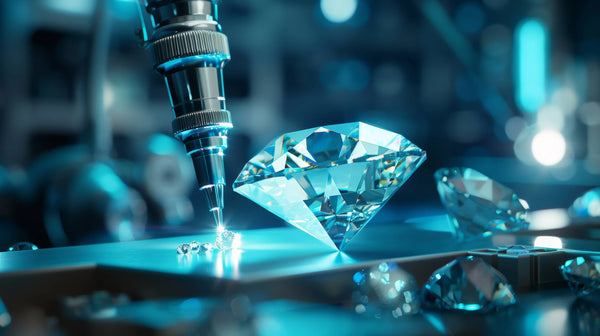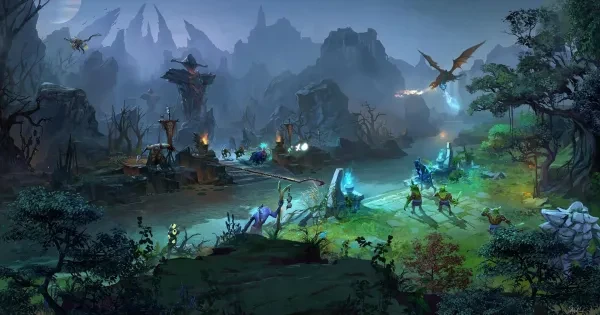GameRefinery analyzes how mobile games are using blockchain tech
[ad_1]
Interested in learning what’s next for the gaming industry? Join gaming executives to discuss emerging parts of the industry this October at GamesBeat Summit Next. Learn more.
GameRefinery takes deep dives into mobile games and now it has released a report that explores how mobile games are using blockchain technology, which could prove revolutionary for game business models but risk angering gamers and game developers who are suspicious of monetization schemes.
Blockchain games are one of the most trending topics in the game industry right now, but arguably one of the most divisive since the early beginnings of free-to-play mobile games, GameRefinery said. The company presented its analysis with a neutral opinion on whether blockchain games are positive or negative for players.
While it may seem this trend has appeared suddenly out of nowhere, blockchain games have been around for a while now; Axie Infinity, one of the most popular blockchain games, was released back in 2018, but it was only in 2021 that the game took off and larger studios such as Square Enix started paying attention to blockchain games, particularly non-fungible tokens (NFTs), which use the blockchain to authenticate unique digital items.
Four interesting examples

There’s a growing number of live games in the market utilizing some sort of blockchain technology, even on mobile, which include games such as the multiplayer battle arena game (MOBA) Thetan Arena, massively multiplayer online role-playing game (MMORPG) MIR4, property trading game Upland and the social customization game Highrise.
All four of these games are quite different in terms of core gameplay, but also in the ways they utilize blockchain technology, ranging from NFT (non-fungible token) integration in land sales and/or different kinds of cryptocurrencies “play-to-earn,” or P2E, mechanics, where players can permanently own items that they buy and resell them to other players for a profit.
GameRefindery said mobile games utilizing blockchain technology require players still need to use web browsers or separate mobile wallets to engage in on-chain activities such as buying and trading cryptocurrencies and NFTs. This could change in the future depending on legislation and big tech, and we’re already seeing some early examples of this, such as the game Summoners War: Lost Centuria, allowing crypto transfers through a wallet app developed by them.
What are blockchain games?

Blockchain games are video games that incorporate some sort of blockchain technologies. These might involve:
- NFTs and/or cryptocurrency added onto a pre-existing live game.
- Games build around blockchain technology from launch.
- Play-to-earn games utilizing cryptocurrencies.
- Blockchain games using NFTs but no cryptocurrency.
In most cases, blockchain games are decentralized, which means in-game items such as weapons, collectibles and skins are tokenized (linked to NFTs which can establish a unique identity), and can be traded for cryptocurrencies and converted into cash. Similarly, there’s a growing trend of games that are allowing players to purchase areas within the game (usually referred to as virtual land) which players can then create and monetize, although uses can vary significantly from game to game.
Blockchain games, just like regular mobile games, can vary significantly in terms of gameplay and features, GameRefinery said. There are P2E games such as the Pokémon-inspired monster battler, Axie Infinity, where players are actively rewarded with in-game tokens, Smooth Love Potions (SLP) for progressing, while other games such as Highrise are reminiscent of older web-based games such as Habbo Hotel and Club Penguin, where the focus is on socializing with other players but the blockchain elements are based around buying and selling items, GameRefinery said.
This isn’t easy to grasp. One of the easiest ways of learning more about which blockchain games are out there and how they’re performing is by taking a look at the various ways in which mobile games are utilizing blockchain technology.
Highrise

Highrise is a social metaverse game where players can socialize with other players, listen to real-life radio stations with popular music playing, express themselves through their avatar and room designs, and participate in mini-games and contests, such as singing challenges to the radio stations thanks to the in-game’s mic feature.
Most of the gameplay takes place in player-created rooms and areas. The game’s meta consists of collecting and customizing various cosmetic items, ranging from clothing accessories to room furniture, which are monetized through direct purchases, grab machine gachas, and battle passes.
On top of in-app purchases (IAPs), the game also has ad monetization through incentivized ads and offer walls. Grossing-wise, the game has performed very well, sustaining around the top-200 grossing mark in the U.S., and being the highest-grossing, customization-oriented social metaverse game.
Highrise introduced NFTs into the game in 2021, making it one of the first already established and successful games implementing blockchain technology and a true hybrid in terms of monetization. The NFTs are in the form of a collection called Highrise Creature Club, which uses Immutable X Layer 2 blockchain, created by Immutable on the Ethereum blockchain. The collection consists of 11,111 NFT avatars, which are basically sets of cosmetic accessories that players can decorate their avatars with.
Aesthetically, the NFT accessories have a striking appearance in comparison to the normal non-NFT accessories in the game and are also of the highest Epic and Legendary qualities. But other than just looking flashy, owning an NFT also lets players access an exclusive Highrise Creature Club room in the game, and recently there was also an in-game event rewarding the NFT owners with daily grab tickets for a special limited-time grab “gacha,” a Japanese term for loot boxes.
The NFTs cannot be traded or sold inside the game like the normal decorative accessories but are traded on an Immutable X marketplace using various cryptocurrencies, e.g., ETH, IMX, or USDC.
Highrise does not yet have its own cryptocurrency, but the game’s roadmap includes Highrise Tokens supporting P2E mechanics. The roadmap also promises other blockchain mechanics such as NFT lands (LAND), player-owned towers consisting of multiple rooms with a dedicated location in the game which can be purchased for ETH (Ethereum’s cryptocurrency), and a special currency called Land Deeds.
The idea of the NFT lands is also to take the user-generated content to the next levels, with players having more possibilities to create content, game experiences, and even 3D environments using developer tools. They can also earn through this by monetizing their own created content and lands.
Upland

Upland is a property trading game built on the EOS blockchain, although the word “game” applies rather loosely. It’s pretty much a map application (linked to the real world map) where you buy and trade plots of land which generate interest over time. Players are represented by a Block Explorer, which randomly roams around the city you currently are in.
Upland is an unusual blockchain game, too, as it currently uses an off-chain, in-game currency, UPX. This acts in a similar way to a premium currency in any free-to-play (F2P) game, as it’s not tradeable or purchasable outside of the client.
Players can purchase UPX with fiat currency in a mobile app or with various cryptos in the web-based version, which is then used to make all the purchases in the game. You can buy properties (minting newly released properties, as well as buying properties from other players) or other minor NFT items. In the web application, you can buy and trade properties with U.S. dollars, but this option isn’t available in the mobile client.
So far, the only way to turn your assets into “real money” in Upland is to buy properties (NFTs) with UPX-currency (or directly U.S. dollars on the web) and sell them for U.S. dollars on the web to other players. This means you can’t turn your UPX-currency directly into money or other cryptocurrencies, so you have to resort to selling your NFT properties which can only be done via the web application.
Owning properties will generate interest in UPX, and you also gain UPX when other players visit them. Naturally, the more properties you own and the more valuable they are, the more UPX you’ll generate every day. Different properties are color-coded on the map according to their ownership status (unminted, up for sale, not for sale, your own properties).
There is also a collection system that incentivizes players to collect various multiple properties from specific areas or neighborhoods, which then boosts the interest generated by the properties.
Players can also build buildings on their properties, but their utility is currently non-existent. You can only see the visual 3D asset on top of the property. There are a lot of plans in the roadmap for buildings, but so far, it’s a minor feature in the game.
Players can also earn various types of minor NFT- items in the game by purchasing them from various drops and as event rewards. These items include collectible 3D item assets called NFL Legits. These items are NFTs, and the ownership gets verified in the blockchain, but they can’t be sold yet. There isn’t really too much utility in-game for these items, and they are primarily collectibles only.
However, they do award something called Fan Score, which dictates the order in which players get access to mint rarer Legits as they’re released. In the future, these items are supposed to be used as your home decorations and other utility in fantasy football-style scenarios, etc.
Overall the game is still in a very early phase in terms of gameplay elements and the actual utility of your NFTs. There are lots of promises of evolving metaverse and added utility to various NFTs in the roadmap, so it remains to be seen how the game evolves in the future, GameRefinery said.
Also, in terms of blockchain applications, Upland is currently a very centralized “game.” It has the possibility of selling the owned properties for U.S. dollars (other NFT types like Legits can’t even be sold for U.S. dollars yet), but even that is done by selling them inside the app to other players vs. other open marketplace sites.
Thetan Arena

Thetan Arena is a blockchain-first, P2E MOBA game (akin to League of Legends) where players battle each other in a variety of different modes and maps using their hero characters. The game plays and feels quite similar to the top mobile MOBA game in the U.S. market, Brawl Stars from Supercell, with the same player-versus-player (PvP) focused top-down hero shooting and attacking gameplay.
However, the most significant difference is that Thetan Arena has been developed with blockchain at the heart of the gameplay, although there’s also a free-to-play mode.
Winning PvP matches with these hero characters rewards players with THC tokens, but individual hero characters have a THC limit capping the amount of THC they can earn, which incentivizes players to purchase additional heroes. In addition to the daily limit, there is also a total earnable matches limit, meaning that once it has been reached, that hero character can no longer earn any THC from matches.
Both of these limits vary depending on the rarity and upgrade level of the hero. THC can also be earned as rewards from progressing in the Ranking Reward seasons and traded on various crypto exchanges, similar to other cryptocurrencies.
Thetan Arena utilizes a mixture of blockchain technology features, including two different cryptocurrencies, THC (Thetan Arena Coins) and THG (Thetan Arena Gems), while the hero characters are NFTs (non-fungible tokens). The NFT hero characters are purchased from gacha boxes on the game’s website with THC or THG, or from other players on the website’s open marketplace using THC.
On the other hand, THG is similar to a premium currency due to its limited supply cap and can only be gained via purchases through crypto exchanges or earned in limited amounts from certain gameplay features (such as in-game tournaments). In addition to using THG to purchase heroes from gacha boxes on the game’s website, it can also be used to upgrade heroes and make them more powerful, increasing their earnable match limits.
While the economy and monetization focus mostly on blockchain technology, there’s a free-to-play model as well. Players can purchase Non-NFT versions of the hero characters directly inside the game with real money through direct purchases and gachas, but these heroes can’t be sold to other players and can’t win THC from matches. Non-blockchain users can still get involved in the play-to-earn side through ranking point rewards, including the THC cryptocurrency, which works as a gateway to the blockchain side of the game.
Non-NFT character and IAP monetization

GameRefinery said we’re still in the early days of blockchain game innovation but there are some challenges ahead that might prevent blockchain games from reaching mainstream appeal. One of these challenges is around barriers to entry.
Mobile games, especially in the casual markets, are known for being easy to pick up and play, but blockchain games require a basic (and in most cases, intermediate) understanding of blockchain technology and cryptocurrencies, as well as how to make deposits and withdrawals from crypto wallets and exchanges.
For the time being, this means the main market for blockchain games comprises cryptocurrency traders, investors, or people in less-developed economies that might rely on games such as Axie Infinity to make money. Blockchain games could widen their target audiences by introducing tutorial modes around blockchain and cryptocurrencies into their main gameplay, but Apple and Google policies make it difficult to promote transactions that take place outside of apps.
That said, there’s already a massive list of studios that are currently developing or planning to release blockchain games this year, and more projects are getting announced every day. Most of these will be on PC first, but there are plans for crossplay with mobile platforms too.
GameRefinery said that some interesting upcoming mobile titles include the Build & Battle game Heroes of Mavia, MOBA Cryowar, the MMORPGs Embersword and Summoners War: Chronicles, and the shooter Golden Bros from Netmarble.
Interestingly, GameRefinery said it is starting to see some bigger names implement blockchain technology into existing intellectual properties. One of the biggest examples so far is the global release of Netmarble’s MMORPG, Ni No Kuni: Cross Worlds. The game initially launched in China, but the global version of the game launched in June with added blockchain technology to support Netmarble’s launch of its proprietary blockchain ecosystem: Marblex. Despite mixed reviews, the game jumped to a top-50 grossing position in the US.
As interest in blockchain games grows, one important area to keep an eye on will be the reception from players and media outlets. In the wider gaming world, GSC Game World and Team 17 abandoned NFT projects for S.T.A.L.K.E.R 2 and Worms after negative backlash from players, and even Sega has said it will abandon its plans to explore NFT content if it’s perceived as a “money-making scheme.” This is due to a general dislike of NFTs and cryptocurrency amongst core gaming audiences, and while the critical reception of blockchain games so far has mainly been in the console and PC space, it’s something that mobile game developers should definitely be aware of, GameRefinery said.
GamesBeat’s creed when covering the game industry is “where passion meets business.” What does this mean? We want to tell you how the news matters to you — not just as a decision-maker at a game studio, but also as a fan of games. Whether you read our articles, listen to our podcasts, or watch our videos, GamesBeat will help you learn about the industry and enjoy engaging with it. Learn more about membership.
[ad_2]
Source link








